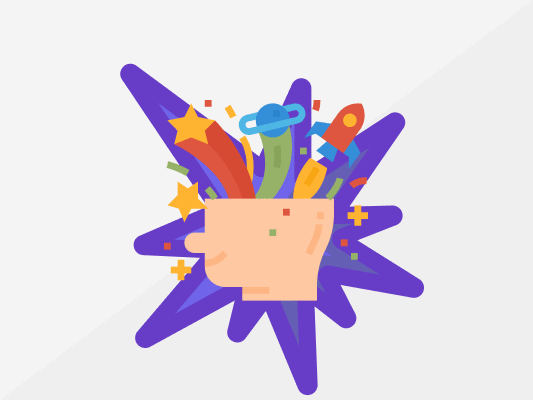Psychology in marketing: know what drives your customers to purchase. We will be covering 11 important psychology principles along with examples and how-to.
Psychology in Marketing: Understanding 11 Human Behaviors and How to Drive Sales
Do you sometimes question why people make purchases? Why do some buyers choose certain products over others, and why do some purchase a product immediately while others deliberate it for days before making the final purchase?
Well, all these answers lie in marketing psychology.
Digital marketers need to understand their customers’ behavior psychology – who their target audiences are, what they need, and what motivates them to make a purchase.
Certain psychological sales tactics affect the way consumers choose and buy products, and learning and implementing this into your marketing strategy will make you much better prepared to drive sales and conversions.
What is Marketing Psychology?
Marketing psychology is about applying psychology concepts and adapting human behavioral studies into your marketing and sales strategy. Often, it involves looking for patterns in customer behaviors and accessing how this relates to their purchase decisions.
It’s about finding out how customers behave and why they behave the way they do, and more importantly, how you can use it to drive sales and conversions.
Why is Psychology in Marketing Important?
Psychology in marketing is all about understanding the people who are your potential customers and persuading them to make a purchase.
To help you take advantage of psychology in marketing strategy, here are 11 top marketing psychology strategies that many big business brands have implemented in real-life.
We will explain each physiological theory and how each plays a role in influencing consumer behavior and provide real case studies of how these tactics were incorporated.
How to Use Psychology in Marketing?
1. Reciprocity
It’s in human nature to repay the favor. The reciprocity principle is based on the simple idea that if the brand has done something good for you, you are more likely to return the favor.
So the idea here is that you must give to the customer first as a brand or business to receive leads and sales.
This can extend into anything from product development to customer service. The idea is to provide a freebie or the best service for your customer. They will more likely return the favor or increase cooperation in the future.
By offering added value to your followers or new customers, you are building a new relationship with them, making it much easier to get their contact information.
How You Can Use Reciprocity in Your Marketing
As marketers, we should be aware that reciprocity can produce many benefits in customer acquisition, retention, and loyalty.
So just think about what good can you do for your potential customers.
Like for example, what information are they looking for that you can maybe offer for free in the form of an article or ebook.
To start, you can always use BiQ’s Keyword Intelligence to do keyword research for your niche and understand the questions that your users are looking for.
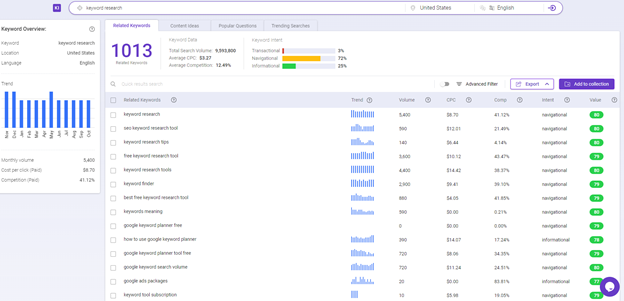
2. Social Proof
The principle of social proof explains that people have a herd mentality when it comes to making decisions. Especially when they are unsure what to do, they are more likely to look around for reference and advice before making the final decision.
That is to say, they are more likely to buy from a company when they see that many other consumers have purchased the product.
It is the icing on the cake if it is accompanied by positive reviews that describe how people are using and enjoying the product. After all, consumers are more likely to believe what users say about the brand than to believe what the brand says about itself.
How You Can Use Social Proof in Your Marketing
High numbers of active subscribers, positive reviews, and customer success stories are examples of social proof you can add to your website.
This is particularly helpful for new potential buyers who will actively look around for information about your brand.
New customers have no personal experience with your product yet, so they are most likely to refer to past customers for their experience.
On the other hand, user-generated content can also be a great social proof. Just take a look at how Airbnb successfully built up its brand with this UGC campaign on Instagram.
According to Pixlee, 80% of AirBnB’s Instagram engagement was driven by user-generated content in the Q4 of 2016.
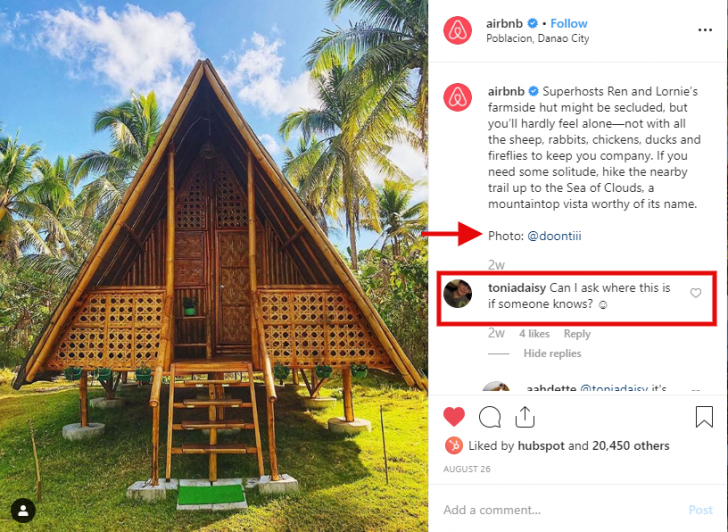
The post above received over 20,000 likes and hundreds of comments in just a few days.
Most importantly, it inspires wanderlust travelers who might be interested in booking with AirBnB for their next vacation.
One other marketing strategy is to create a referral program that will reward your current customers for being your brand advocate and spread the word about your brand.
3. Scarcity and Urgency
This marketing psychology suggests that people are more likely to place a higher value on rare or limited things. In comparison, they might place a lower value on things that are easily accessible.
Think about limited edition bags or our oil reserves, this is the scarcity principle in action, and it taps into people’s fear of missing out (FOMO).
When applied to marketing, it can be as simple as letting consumers know that the product is in short supply or are likely to miss the special deal expiring in the next hour.
Consumers simply don’t want to miss out on a good deal or a product that may be gone soon, so scarcity acts as that important push factor that encourages impulse purchasing.
How You Can Use Scarcity/ Urgency in Your Marketing
You can easily this psychology in marketing by implementing holiday sales, exclusive limited-time offers or showing that there are just a few products left.
However, always make sure this element is easily spotted for the best effect, for example, having a countdown timer instead of just saying “one day left.”
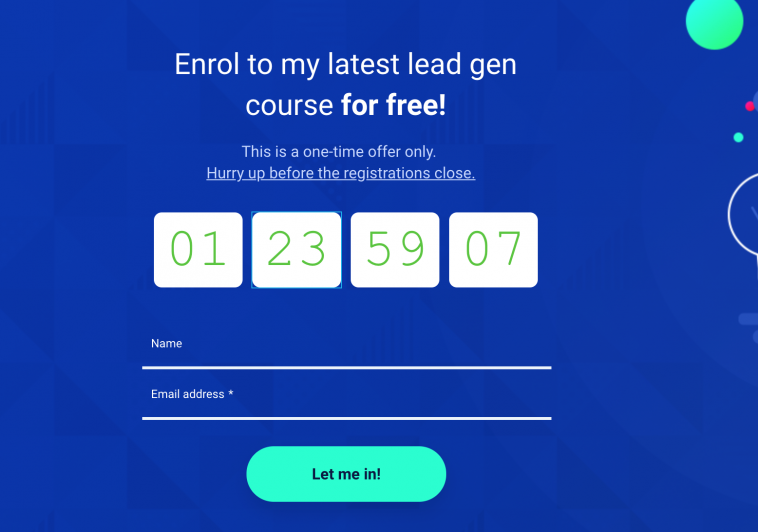
Seeing that the offer is ending soon will prompt your audience to complete the purchase quickly to not miss out.
4. Loss Aversion
This theory suggests that most people tend to prefer avoiding losses to acquiring gains. That is to say; we are more likely to feel upset about losing $50 than we are getting $50.
Various studies have shown that negative emotions tend to have a stronger and lasting impact on most people than positive emotions.
You might find this principle slightly similar to the scarcity element we mentioned earlier. Still, the focus here is about telling your potential buyers that they are at risk of losing what they already have to further urge them into taking action.
How You Can Use Loss Aversion in Your Marketing
You can often find this used in free trial offers. Whereas the trial period comes to an end, businesses would put out marketing messages reminding users what they will be losing.
Besides, retail giant Target is also used in their online eCommerce store, where their marketing message highlights the $35 minimum users have to meet to not lose the chance for free shipping.
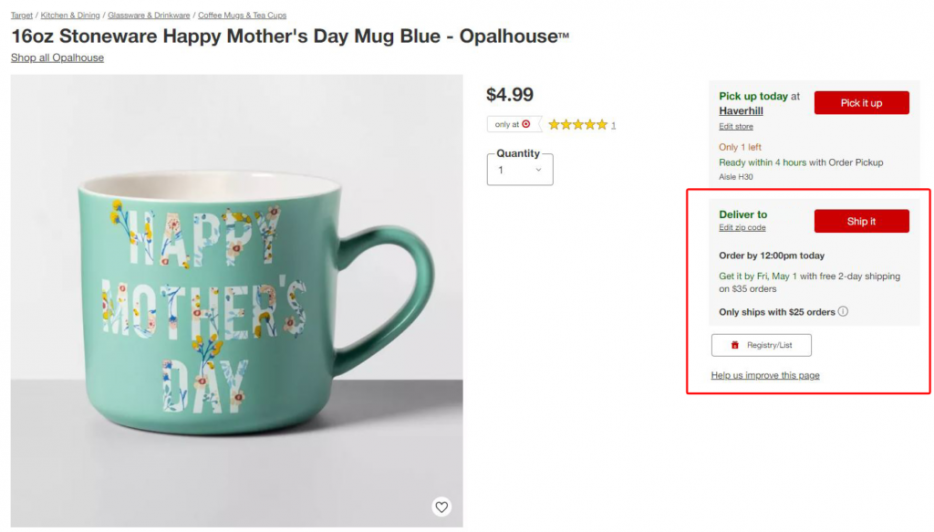
5. Decoy Effect
The decoy effect theory is based on the cognitive bias of introducing an alternative, less attractive option to accentuate the better deal.
Often, a decoy is added between two options to direct users’ attention to selecting the better and often more expensive deal.
Because when there are only two options available, consumers can easily compare the products’ price and quality to decide which one they want.
For example, in a small and large popcorn, many consumers would often gravitate to the smaller option seeing that this is just a movie snack.
However, when a middle-sized popcorn option was introduced with a price point close to the large popcorn, it changes movie-seers’ decision entirely. Many opted for the large popcorn size seeing as it was a much better deal.
How You Can Use Decoy Effect in Your Marketing
Similar to the popcorn scenario, you can apply the decoy effect to your pricing plans.
To use this psychology in marketing, try offering three plans instead of two, with one option serving as a decoy pushing your customer options to the more desirable, better option.
Here’s another example of the decoy effect being used by National Geographic for their subscription options.
Even though you might only be interested in a digital subscription, in the beginning, you are also more likely to consider taking print as well, seeing that you can get more value with just an extra $7.

6. Anchoring Bias
According to the anchoring bias theory, our decision is often heavily influenced by the first related information.
Applied to marketing, the anchoring bias means that customers can evaluate prices and products based on their first-hand information.
For example, let’s say you are looking to buy a new aquarium but have no idea of the price range. You may go to the first store and see a mid-sized tank priced at $100, but the same aquarium is just priced at $77 at the next store.
The $77 tank in comparison to the $100 tank might seem like a pretty good deal, even though the person originally had just a budget of about $50.
How You Can Use Anchoring Bias in Your Marketing
Many marketers are already applying this to their marketing by showing their original prices slashed out alongside the reduced sales rate.
The original price is important here to serve as a point of reference for the buyer to make them feel like they are snatching a good deal.
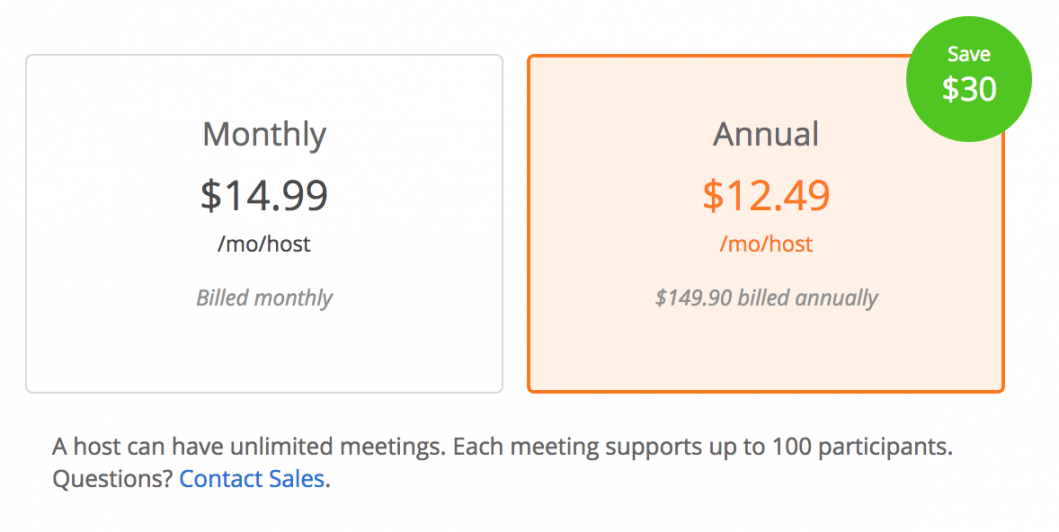
7. Emotional Marketing
It doesn’t matter how many pros or features your business has; nothing connects your brand better with your customer than through emotion.
Psychologists have discovered that humans always feel first before they think.
When we are confronted with sensory information, the emotional part of our brain is more likely to process the information first, seeing that it only uses one-fifth of the time it takes the cognitive part.
That’s why emotional marketing is one of the most important ingredients to creating viral campaigns. All in all, it is about storytelling and connecting audiences with your brand in a personal and human way.
How You Can Use Emotional Marketing in Your Marketing
Applying this principle is all about evoking emotion in your marketing and using storytelling to build customer connection and loyalty.
This is especially important for marketing to millennials, and no other companies beat Apple in this segment.
Apple’s branding strategy is built on the late Steve Jobs’ creative visionary and appeals to consumers’ desire to become part of a bigger lifestyle movement.
The simple and aesthetically beautiful products created have enabled the Apple brand to be associated with luxury in its followers’ eyes.
But still, consumers are ready to pay a premium to Apple products driven by emotions, not the actual value of the product.
On the other end, to make sure your copywriting can inspire emotion, you can check with our BiQ’s Content Intelligence, and it will check your content section by section not only for optimization opportunities but also for its sentiment analysis.
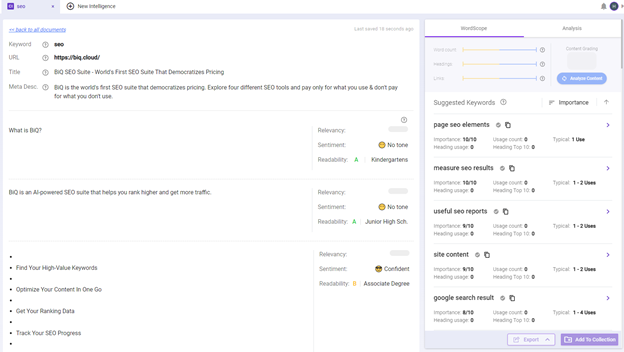
8. Law of Least Effort

As a human being, I am sure you will resonate with this, but we are inherently lazy.
Yes, we might be motivated and working hard to achieve our goals, but if you can achieve it using less effort or resistance, why not?
So let’s say, if people can’t find your contact details easily, they would simply take the path of least resistance and don’t contact you or find your more easily contactable competitor.
So when it comes to psychology in marketing, you must always remember to apply the law of least effort to make it easy for our customers.
How You Can Use Law of Least Effort in Your Marketing
This can mean using simple language in your brand messaging or having fewer options to avoid analysis paralysis.
The main idea is to make it easy for your audience to find the information they are looking for and also easy to purchase your product and service.
9. Priming
Ever wanted to get into the minds of your customers? In marketing, priming occurs when a brand successfully creates an association that connects one stimulus to a subsequent stimulus.

Often, this will happen with branding, whereby a brand would try to create an association with their product or service. For example, what first comes to mind when you think of fast food or soft drinks? Is it McDonald’s and Coca-cola?
This is the strong effect of advertising and priming over the decades that conditioned our brain to respond in this manner.
But otherwise, you can also use priming techniques in your website or design to help visitors remember key information about your brand. For example, you may associate kanban boards and Husky with Trello, making it all the more memorable.
How You Can Use Priming in Your Marketing
Besides making your brand more memorable, priming can also play a factor in influencing your audience’s behavior and purchase decision.
In a study by Naomi Mandel and Eric J. Johnson, the researchers utilized subtle priming techniques to see if the background design can influence consumer product choices between two options.
Audiences were each primed on two different elements, one group being shown a green website background with pennies to emphasize money, while the other having a background with sky and clouds to highlight comfort.
And it turns out the priming work, as audiences were more likely to choose the product that reflects what they were pre-conditioned with.
10. Color Psychology
You might not notice it, but color can have a huge impact on our behavior. It influences our mood and feeling, which can translate into our purchasing actions.
According to a study done by Sayendra Singh, consumers can decide if they are purchasing or not purchasing a product within 90 seconds of their initial interaction, and about 62% to 90% of that assessment is based on colors alone.
How You Can Use Color Psychology in Your Marketing
As shown in the study, it is essential to use the right color palette for your product or website design because this can not only help you influence your consumer’s mood but also contributes to differentiating your product from your competitors.
Read this post here to understand how each color affects human psychology and implement the one that matches your brand tonality. But at the same time, make sure you test the color if it is really working for you.
Bright Vessle has created an AB testing with their email newsletter, experimenting with their call to action button and a specific color scheme to find the best conversion rate.
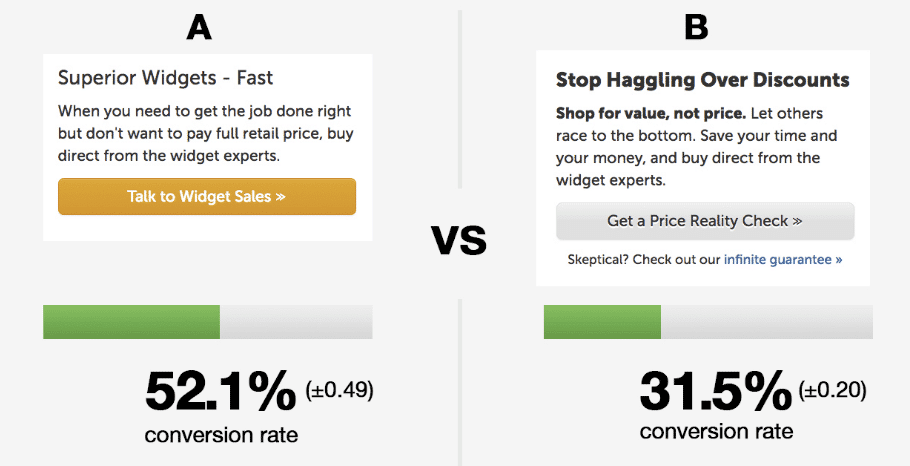
Sometimes one button color might be outperforming because it gains more attention when it contrasts with the other page elements.
11. Fitt’s Law
Fitt’s law is all about human movement. In terms of online marketing, we will be looking a user experience and mouse movement. More specifically, we should be looking at these two components, which are:
- The distance to the target
- The size of the target
In good common sense, if you want to increase conversions of your opt-in offers, you should make the button larger and more attention-grabbing.
Alternatively, if you want to avoid people from unsubscribing from your email, make sure the option is smaller and further away.
How You Can Use Fitt’s Law in Your Marketing
It’s easy to apply this law to your marketing. Just understand your desired outcome from your audience visiting this page and make sure your desired elements, such as the submit or add-to-cart button, is the most obvious.
Besides, we recommend using heatmap and behavior analytic tools like HotJar and Mouseflow to keep track of how actual users are interacting with your website and page.

The key idea here is to use your consumer behavior and data to make informed design decisions and tweaks to improve your desired outcome.
Conclusion
While you don’t need to be a psychologist to become a marketer, all the above psychology concepts will be of great help.
It’s important to understand both psychology and marketing because your buyers are irrational beings driven by their emotions.
By adding psychology in marketing, you can communicate your value more effectively and persuade your potential buyers to take action immediately.
However, be selective. When planning your marketing strategies, make sure you only implement psychology principles that work for your business campaign, and you’ll likely boost ROIs and see more sales!



